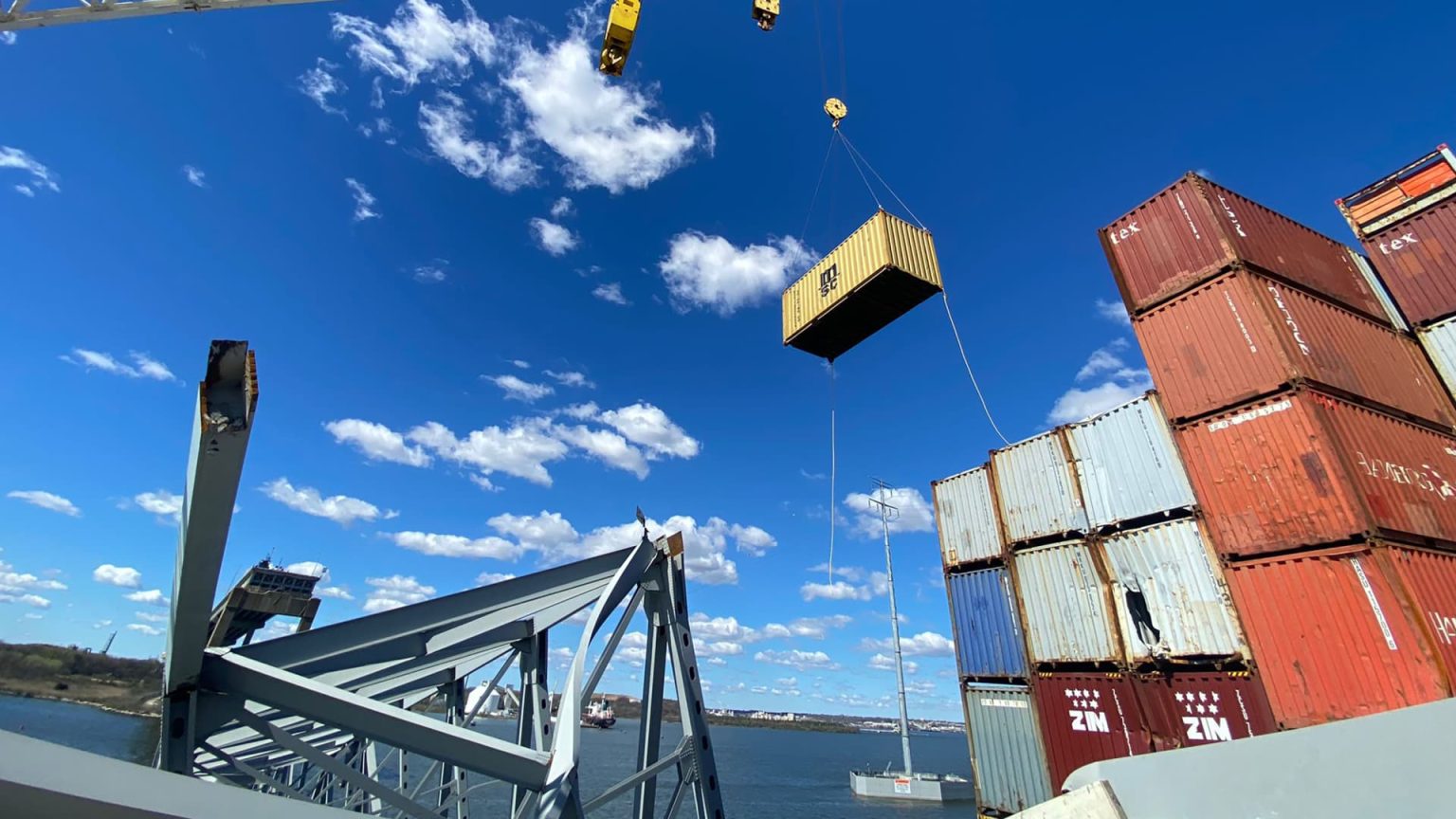The process of removing shipping containers from the 984-foot-long vessel, Dali, has begun following a bridge collapse that occurred on March 26, resulting in the closure of the Port of Baltimore for marine traffic. Unified Command, made up of various agencies and organizations, has started removing containers to lighten the vessel so it can be refloated and moved by tugs. It is expected to take several weeks to complete the removal of approximately 140 containers, with the initial goal being to create a safe working area for crews involved in recovery efforts for missing workers and debris removal. The removed containers are being taken to Sparrows Point until further plans are approved.
The logistics for the cleared containers are still being discussed, with plans to potentially send them to the CSX Terminal. CSX has expressed a willingness to assist with recovery efforts in Baltimore, but no significant updates have been reported yet. Once the Dali is refloated and no longer listing, tugs will move the vessel to the CSX terminal at the Port of Baltimore. It is still being determined how many tugs will be needed for the operation. The reopening of the port is crucial as it is a major hub for various imports and exports, including auto, clothing, household goods, construction materials, electronics, appliances, and produce.
Engineers anticipate restoring “normal capacity” access to the main channel and the Port of Baltimore by the end of May, with the goal being to move the Dali away from the port as a sign that the channel is ready to be reopened. In the meantime, smaller commercial vessels are allowed to use an alternate channel, with the Coast Guard permitting vessels up to 96 feet in length to navigate the area. The vessel Dali struck the Francis Scott Key Bridge after losing navigational control, leading to the destruction of the key piece of infrastructure. The first vessel to use the alternate channel was a tugboat pushing a fuel barge carrying jet fuel for the Department of Defense.
The removal of containers from the Dali is a meticulous process that involves coordinating efforts with various agencies and organizations. Unified Command is working to safely lighten the vessel, remove containers that pose risks to recovery crews, and ultimately reopen the Port of Baltimore for marine traffic. The completion of the operation is expected to take weeks, with ongoing discussions regarding the logistics of cleared containers and their potential destination at the CSX Terminal. The reopening of the port is vital for the economy, considering its role as a major trade hub for a wide range of goods and services.
The recovery effort at the Port of Baltimore has involved multiple parties, including Synergy Marine, the U.S. Coast Guard, U.S. Army Corps of Engineers, Maryland Department of the Environment, Maryland Transportation Authority, and Maryland State Police. The first batch of removed containers has been transported to Sparrows Point, where they will remain until further plans are approved. Once the Dali is refloated and moved to the CSX terminal, the next phase of the operation will involve finalizing the reopening of the port for normal capacity access. The timeline for completion is set for the end of May, with experts monitoring progress and adjusting plans accordingly to ensure a safe and efficient recovery process.


